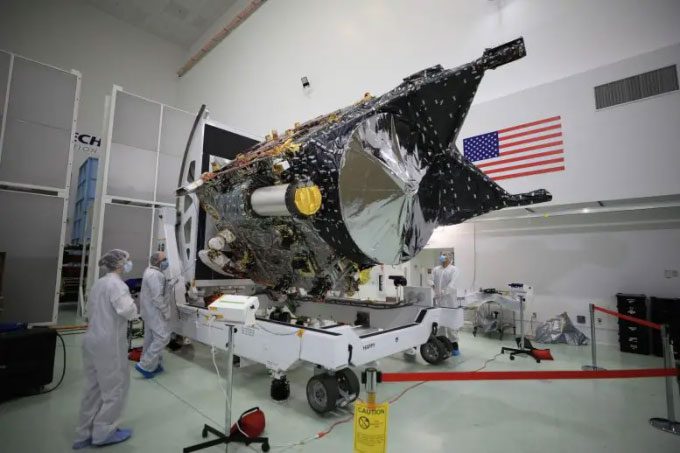The NASA Psyche spacecraft has successfully transmitted data back to Earth from a distance 40 times greater than that between the Earth and the Moon.
The DSOC experiment aboard NASA’s Psyche spacecraft has set a new record for optical communication by sending near-infrared laser signals with experimental data over a distance of 16 million kilometers to the Hale Telescope at the Palomar Observatory in San Diego County, California, as reported by Interesting Engineering on November 17. This impressive feat marks the farthest distance achieved by this technology to date.

The Psyche spacecraft equipped with the golden-capped laser transceiver of DSOC at the Astrotech Space Operations facility in December 2022. (Photo: NASA/Ben Smegelsky).
The Psyche spacecraft was launched in October with the goal of studying the asteroid 16 Psyche. The DSOC experiment aims to demonstrate a data transmission speed that is 10 to 100 times faster than the radio frequency systems currently used by spacecraft.
Both near-infrared laser communication and radio communication use electromagnetic waves to transmit data. However, near-infrared light packages data into much tighter waves, allowing ground stations to receive more data. This capability will be highly beneficial for future robotic exploration missions or crewed missions, as well as for supporting scientific instruments with higher resolution.
The experiment reached a significant milestone on November 14, when the flight laser transceiver aboard the Psyche spacecraft locked onto a laser beacon transmitted from the Optical Communications Telescope Laboratory at the Table Mountain Facility of the Jet Propulsion Laboratory (JPL) near Wrightwood, California. The laser beacon guided the transceiver to direct its laser beam down to Palomar, located 130 kilometers south of Table Mountain. The automated systems on both the transceiver and ground stations also adjusted their orientations.
“This is one of many important milestones for DSOC in the coming months, paving the way for higher data rate communications that could transmit scientific information, high-resolution images, and video, ultimately supporting humanity’s next leap: sending humans to Mars,” said Trudy Kortes, Director of Technology Demonstration at NASA headquarters in Washington.
“The experiment on November 14 was the first time we fully integrated ground-based equipment with the flight transceiver, requiring the DSOC and Psyche teams to work in sync. It was a significant challenge, and we have much more to accomplish, but in a short amount of time, we were able to transmit, receive, and decode some data,” commented Meera Srinivasan, the DSOC operations team lead at JPL.
Optical communication has been demonstrated in low Earth orbit and to the Moon, but DSOC is the first experiment in deep space. Transmitting laser beams over millions of kilometers requires extreme precision.
The experiment also had to account for the time it takes for light to travel from the spacecraft to Earth. At the farthest distance between the Psyche spacecraft and Earth, DSOC’s near-infrared photons would take about 20 minutes to return (during the November 14 experiment, the transmission time from Psyche to Earth was approximately 50 seconds). During this time, both the spacecraft and the blue planet are in motion, so the laser beams for both uplink and downlink need to be adjusted according to positional changes.



















































